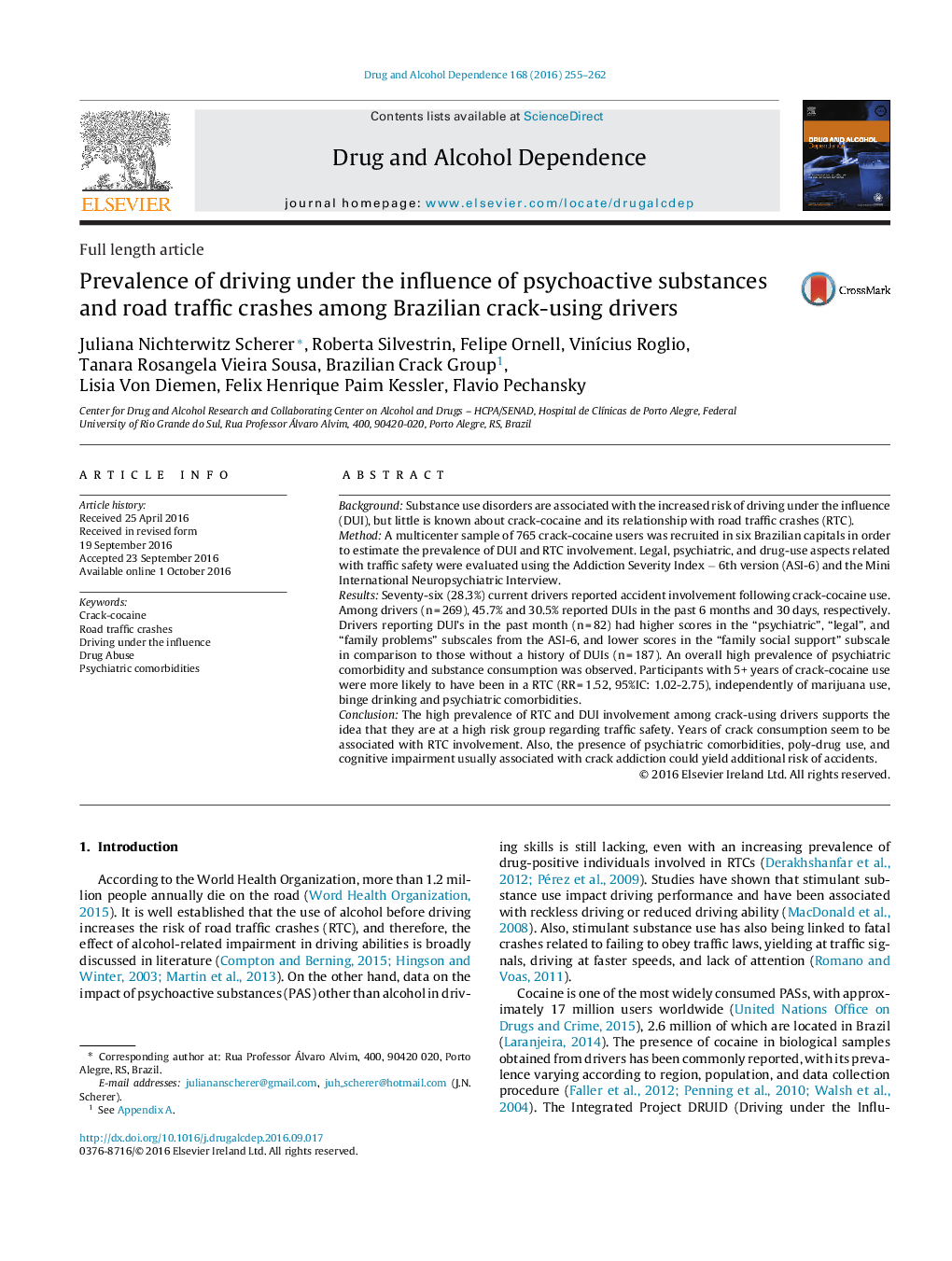| کد مقاله | کد نشریه | سال انتشار | مقاله انگلیسی | نسخه تمام متن |
|---|---|---|---|---|
| 5120472 | 1486123 | 2016 | 8 صفحه PDF | دانلود رایگان |
- Crack-cocaine users who drive reported high prevalence of driving under the influence (DUI)and road traffic crashes (RTC);
- Users with recent DUI history show more legal, psychiatric, and social problems;
- Five or more years of crack consumption were associated with previous accident involvement
- Crack-cocaine users are a risky population for road traffic crashes.
BackgroundSubstance use disorders are associated with the increased risk of driving under the influence (DUI), but little is known about crack-cocaine and its relationship with road traffic crashes (RTC).MethodA multicenter sample of 765 crack-cocaine users was recruited in six Brazilian capitals in order to estimate the prevalence of DUI and RTC involvement. Legal, psychiatric, and drug-use aspects related with traffic safety were evaluated using the Addiction Severity Index â 6th version (ASI-6) and the Mini International Neuropsychiatric Interview.ResultsSeventy-six (28.3%) current drivers reported accident involvement following crack-cocaine use. Among drivers (n = 269), 45.7% and 30.5% reported DUIs in the past 6 months and 30 days, respectively. Drivers reporting DUI's in the past month (n = 82) had higher scores in the “psychiatric”, “legal”, and “family problems” subscales from the ASI-6, and lower scores in the “family social support” subscale in comparison to those without a history of DUIs (n = 187). An overall high prevalence of psychiatric comorbidity and substance consumption was observed. Participants with 5+ years of crack-cocaine use were more likely to have been in a RTC (RR = 1.52, 95%IC: 1.02-2.75), independently of marijuana use, binge drinking and psychiatric comorbidities.ConclusionThe high prevalence of RTC and DUI involvement among crack-using drivers supports the idea that they are at a high risk group regarding traffic safety. Years of crack consumption seem to be associated with RTC involvement. Also, the presence of psychiatric comorbidities, poly-drug use, and cognitive impairment usually associated with crack addiction could yield additional risk of accidents.
Journal: Drug and Alcohol Dependence - Volume 168, 1 November 2016, Pages 255-262
